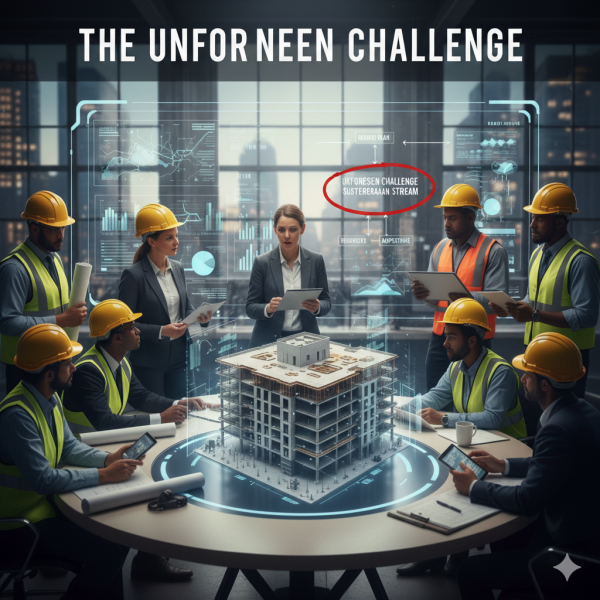In the dynamic world of construction, every project is a story waiting to unfold. While blueprints and meticulously planned schedules provide a roadmap, real-life scenarios often introduce unforeseen challenges that test a project manager’s mettle. Today, I want to share a particular case from A&A Building Co.’s history that perfectly illustrates the importance of adaptability and quick thinking.
Our team was deep into the construction of a state-of-the-art office complex in a bustling urban area. The foundation was laid, the steel skeleton was rising, and we were on track, perhaps even a little ahead of schedule. Then, a local geological survey, prompted by a new neighboring development, revealed an unexpected anomaly beneath our site: a previously uncharted subterranean stream that, while small, could compromise the long-term stability of a specific section of the building if not addressed.
The news hit us like a ton of bricks. We had conducted thorough initial surveys, but this particular feature had eluded detection. The initial reaction was a mix of frustration and concern. How would this impact our timeline? What about the budget? More importantly, how would we ensure the structural integrity of the building?
Our first step was to immediately halt work on the affected section. This was a difficult decision, as it meant a temporary standstill and the potential for significant delays. However, safety and quality are paramount at A&A Building Co., and cutting corners was simply not an option.
Next, we assembled a multidisciplinary task force. This included our internal engineering team, external geological experts, structural engineers, and even legal counsel to navigate potential implications. The collaborative effort was intense. We spent days poring over new data, conducting additional probes, and brainstorming solutions.
Several options were on the table, each with its own set of pros and cons. Diverting the stream, reinforcing the foundation with specialized piling, or even slightly redesigning the affected portion of the building. Through rigorous analysis and open discussion, we decided on a combination of solutions: a reinforced, waterproof containment system for the stream combined with micro-piling for enhanced foundational support in that specific area. This approach provided the necessary stability without requiring a complete overhaul of the existing design.
The implementation phase was another challenge. It required sourcing specialized materials quickly, retraining a portion of the crew on new techniques, and integrating these unexpected tasks into an already tight schedule. Our project managers worked tirelessly, re-sequencing tasks, adjusting resource allocation, and maintaining constant communication with all stakeholders, including the client.
Looking back, this project stands out not because of the initial setback, but because of how our team responded. It was a testament to:
- Adaptability: The willingness to pivot and embrace new information, even when it’s disruptive.
- Collaboration: The power of bringing diverse expertise together to solve complex problems.
- Problem-Solving: Focusing on solutions rather than dwelling on the obstacles.
- Client Communication: Keeping the client fully informed and involved every step of the way, building trust amidst uncertainty.
The project was ultimately completed successfully, on time, and within the revised budget. The office complex stands today, a testament to resilience and the unwavering commitment to quality. This experience reinforced a crucial lesson: in construction, anticipating the unforeseen is impossible, but building a team that can effectively adapt to it is the true mark of a successful project.
